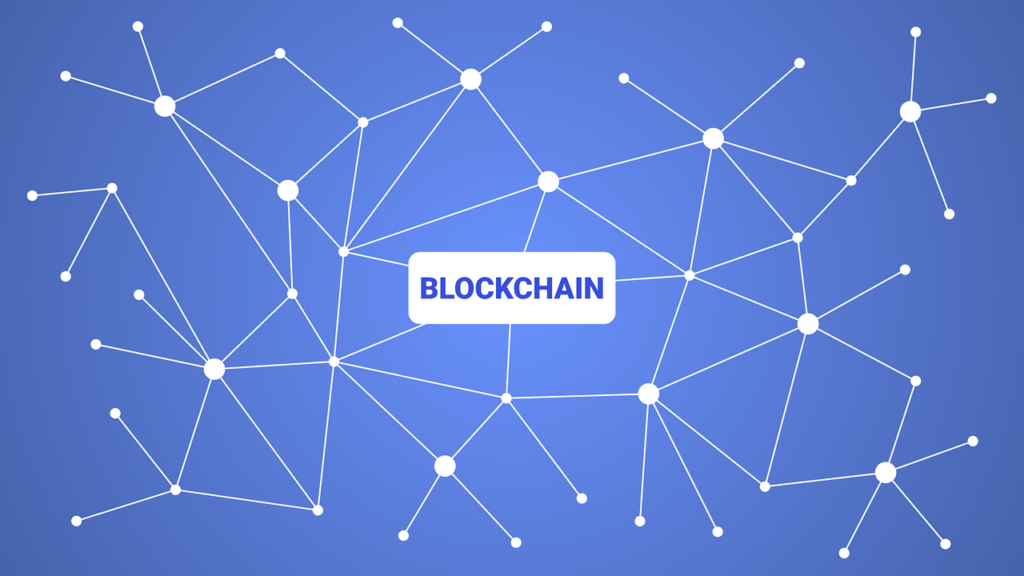What is EFT – Emotional Freedom Technique (Uses, Science & My Personal Experience)
In this story, I am going to talk about an effective but still scientifically controversial therapy called Emotional Freedom Technique or EFT for short. It’s been used for decades as an alternative treatment of anxiety, depression, and even some chronic pain conditions. I’ll dive deep into my personal experience with it as well as into the scientific research supporting EFT’s psychological benefits. I’ll also touch upon EFT’s connection to acupuncture and traditional Chinese medicine and how this may be related, in a very abstract manner of course, to the recent Higgs Boson discovery.

What is EFT tapping (Emotional Freedom Technique) and what is it used for?
EFT, or often called simply “tapping”, is a modality of an exotic term “Energy Psychology” or the more general – “Energy Healing”. While this may sound more or less absurd to some, there is a growing number of studies and clinical research done on EFT and its effectiveness in treating post-traumatic disorders, phobias and even in boosting athletic performance.
I will talk more about the science in the following section, now let’s dive deeper into what is EFT and how it works.
In short: EFT is a technique that is used to elicit and release deeply suppressed emotions through focusing on a specific problem, asking questions and doing series of tappings on specific points of the body while repeating positive statements. These are not just any spots on your body, but very specific acupuncture points, which have been known and used by the Chinese for over two thousand years in acupuncture treatments.
To fully comprehend how EFT (Emotional Freedom Technique) works, it is worth taking the time to understand the basics of acupuncture.
Acupuncture originated in China but no one really knows for sure when exactly did that happen. Some people claim it was around 6000 BCE, based on stone needles, dating around that time, and ancient documents describing the meridian system and the flow of Chi but not acupuncture itself. Bare with me I’ll explain what all that means in more detail.
The first documented evidence for acupuncture as a treatment dated much later, around 100 BCE. It was found inside “the Yellow Emperor’s Classic of Internal Medicine”, likely a collection of traditions, passed by to the generations over the centuries.
In 1980, The World Health Organization recognized acupuncture for its efficacy and recommended it as an alternative therapy for 43 different disorders, despite its mysterious ways of working.
In traditional Chinese culture, it is believed that every living entity is sustained by a subtle invisible Life Force called Chi (Qi). Chi is the energy of Life, it leaves the body at the time of death.
According to Classical Chinese Philosophy, “Chi is the force that makes up and binds together all things in the universe. It is paradoxically, both everything and nothing.”
Sounds familiar? It sounds a lot to me like the explanation of the so called God’s particle: “An invisible energy field present throughout the universe that imbues other particles with mass, believed by physicists and scientists to govern the basic building blocks of matter.”
In traditional Chinese medicine, Chi energy is perceived as flowing, in a very precise manner through the body, via interconnected pathways called meridians. Think of it as an invisible energy circulatory system.
There are 14 main meridians (12 in some sources) within the body that distribute Chi to all vital organs. Each meridian is rich of acupuncture points that, when stimulated, affect different organs and systems in the body. Illness occurs when Chi flow through the meridians and the acupuncture points are disturbed or blocked.
There are more than 2000 known acupuncture points within the body.
Modern day CT scans reveal that “acupuncture points have a higher density of micro-vessels and contain a large amount of involuted microvascular structures.’
Another important finding, that sheds a bit of light on why is acupuncture working, is that acupuncture engages the brain to produce the pain-relieving hormone Adenosine (PubMed, J Pain. 2012 ). There are also claims that acupuncture helps to release the “feel good” hormone Endorphin, but it seems that it is just the case for a very specific form of acupuncture based on electric stimulation. For now, traditional acupuncture does not show solid evidence for stimulating Endorphin production. More research is also needed to support the theory that acupuncture regenerates the nervous system through stimulating the nerves to produce growth factor.
Despite that the scientific research on acupuncture has been on a growth sprout for the last two decades with over 13,000 studies published in medical journals in 60 countries, the findings are still inconclusive.
There is still no clear understanding of how and why stimulating acupuncture points through needling, pressure or electromagnetic signals work. However, many clinical trials and evaluations, as well as hundreds of thousands of patient reports clearly show that acupuncture does work.
What accupuncture has to do with EFT (Emotional Freedom Technique) ?
As I briefly mentioned earlier, the Emotional Freedom Technique uses series of tappings done on 12 specific acupuncture points. While traditional acupuncture is generally used for physiological treatments, EFT main focus is addressing psychological disorders and traumas.
The connection between the meridian system and emotional states was first introduced in the western world with the name of “Acupuncture Emotional System” (AES), developed by the Australian psychologists Dr. John Diamond. Dr. Diamond refined this system for over 35 years. He discovered and categorized over 200 relationships between emotions and specific acupuncture points.
He also added another interesting component to the stimulation of acupuncture points. He started using affirmations (positive self-statements or thoughts) when the person was contacting selected acupuncture points.
In the 80s, Roger Callahan, inspired by Diamond’s work, developed a series of tapping protocols for specific emotional conditions, combined under the name TFT (Thought Field Therapy).
The term Emotional Freedom Technique (EFT) was coined in the early 90s by Gary Craig, a Stanford trained engineer and a life performance coach. He believed and proved himself right that there is no need for complex and unique sequences for different types of psychological disorders and conditions, like Callahan’s TFT suggested. Craig developed EFT as a “single formula” tapping method, which is now one of the most famous modalities in alternative psychological treatments.
The method is simple enough that you can do it by yourself, although, I personally find it much more effective to seek the assistance of a trained professional.
Is EFT tapping evidence based or a mere pseudoscience?
The rapid and consistent results EFT gives certainly attracted the attention of the scientific community.
American clinical psychologist David Feinstein Ph.D. is at the frontiers of EFT research. He has received 9 national awards for his books on consciousness and energy healing, but he wasn’t always so inclined to such exotic methods. He happened to marry Donna Eden, an extraordinary woman who claimed she can literally see how energy is flowing through the body, where it gets stuck and progresses into an illness. She has developed her own, unique energy healing techniques for various health conditions. The consistent, nearly miraculous results Donna’s patients reported, undoubtedly influenced David’s analytical mind to turn an eye into the mysterious realms of invisible energy fields and their relation to human health.
His most groundbreaking work is an extensive meta-study, reviewing 3000 research articles on EFT, that was published in the prestigious General Psychology Journal in 2012.
Shortly after the publication, the American Psychology Association (APA), one of the largest associations in the world, with vast international influence, recognized EFT by allowing EFT courses to be offered to therapists and other psychology practitioners, as part of their annual mandatory selective continuing education circularium.
What is Clinical EFT?
Clinical EFT emerged as a new term in the energy healing community, referring to “the “evidence-based” method that has been validated in research studies that meet the requirements of the American Psychological Association (APA) Division 12 Task Force on Empirically Validated Treatments.”
Despite this bold definition, I could not find any official statement regarding Clinical EFT validation as evidence based practice on the APA website. It is also not included in their official listing of evidence based practices.
Here is a detailed library of the conducted research, along with an explanation of APA standards.
Seems like APA still tries to play it on the safe side with EFT – recognizing it as a valid continuing education credit for professionals but at the same time not endorsing it just yet, officially, as an evidence based practice.
The main argument against EFT in the scientific community is that the extensive research done on EFT did not put into consideration a proper placebo control group, which is also the case with acupuncture itself. Another objection in the scientific community is that there is no enough evidence for how EFT treatments affect patients in the long run. There is a debate about whether the method just gives a temporary relief or it might as well provide long term, even permanent results.
What I found surprising is that Wikipedia is absolutely dominated by EFT skeptics, calling it straightforward a pseudoscience and citing arguments of the very little scientific review done to support that specific point of view.
What does EFT help with?
EFT can be applied to every disturbing emotion or event and help clear the drama in a surprisingly short time. Its most famous and researched uses are for healing anxiety, depression, PSTD, eating disorders, addictions, phobias, and extreme phobias, as well as bettering overall performance, implementing long-term goals, reducing stress and even physical pain.
A person may not even be aware of the exact emotion they want to treat. EFT does a great job when done with a professional, to help you get to the core of what is really going on deep inside.
Feeling NOT Good Enough? Read This (my personal experience with EFT)
I did an emotional breakthrough session with EFT (Emotional Freedom Technique) under the guidance of a very nice person, friend and a client of mine – Hang.
The goal for the session was for me to feel lighthearted.
For over 2, maybe 3 years, I’ve been carrying a heavy stagnant feeling in my entire chest area. So strong and stagnant I felt heaviness and sometimes pain every time I breathe, especially when trying to do a deep breath. I haven’t told anyone about it because I could not handle being diagnosed by “all-knowing” relatives and friends with heart disease or who knows what. Of course, as usual, I thought I can handle it on my own and I don’t need help. During my doctor’s routine check-up everything was fine so I lived with it.
I just got used to it, bearing with it, ignoring it. Sometimes I would feel frustrated at it and my inability to let go, even though I meditate every night, eat healthy food, try to be active during the day, etc.
This was my first emotional breakthrough session ever with EFT so I had no expectations for the results. I filled out a thorough questionnaire before the actual session. I didn’t even think of my heavy heart when filling the questionnaire – this is how used to it I was.
When we started Hang asked me: “If there was one single thing you’d like to get out of this session, what would that be?”I didn’t have to think about it, it just came out of my mouth – I want to feel lighthearted. And this is how a 3-hour long journey into my deeply wounded heart began.
I was able to bring out emotions and feelings from events I thought I have fully released and forgotten. I realized how much anger and sadness is still residing in my body after I opened all these old drawers and took the bullshit out of them. I noticed that when I remembered a feeling of sadness or guilt, I felt the pain in my chest area. I noticed that when I felt anger or resentment, my pain shifted to the solar plexus area.
What EFT does is to elicit the hidden, suppressed emotion and then to release it through series of tappings done on certain points of the body. While you tap, you also repeat specific phrases out loud. When you want to elicit an emotion that is very deeply suppressed and bring it to the surface you repeat out loud, for example: “My father constant yelling still makes me feel sad, I am sad, I am angry” and you tap. At first, I did not want to say that because it sounded like a negative affirmation to me; but then I noticed that when I do say out loud the truth about my feelings, the pain level and discomfort rise and this is exactly how one becomes aware of these emotions. Then and only then one can truly release them.
Dealing with the emotions is as easy as eliciting them with EFT. I simply kept going with the tapping but this time saying something like: “Even though I am still angry with my father, I deeply and completely love and accept My-Self.”
Hang was taking notes on the levels of pain and discomfort (from 1 to 10) at the beginning of the session, while we elicited the emotions. Some emotions required more tapping to be released. Some required me to say: “I give My-Self permission to let go of this anger or this sadness.” This was needed explained Hang, because I was so used to it that it felt safer for me to hold on to the anger rather than to release it and become vulnerable.
The anger was my “safety island” my protection against my father yelling. I thought that if I feel angry I will not get hurt by his behavior, without realizing that anger was just hiding the hurt, it was still there.
It is amazing how tapping into one thing unlocks another and then another (Hang said we need a bigger board for me :D).
After 3 hours of an intense “emotional clyster”, we bottomed down to what Hang calls “the root issue” – the main hidden emotion that sprouts out all other feelings.
“If one is able to “cut” the root out, the branches also disappear. “
For me the root turned out to be a fear of “not being good enough”, not being good enough to live up to the expectations and worldviews of my father, not being good enough as my sister, not being good enough to fall into social norms, etc. Over the years, shame and anger developed to “protect me” from that very same fear of not being good enough.
Instead of accepting and loving My-Self for the mistakes I made, I would get angry at my-self first and then try to blame it on other people. Deep inside I would feel shame for both making a mistake and for blaming others for it.
At the end of the session, I was able to feel light-hearted at level 6 (on a scale from 0 to 10). I slept like a baby, I woke up still lighthearted at level 6. Not only that but my whole body felt humble without its usual aches and stiffness.
The following day I had what Hang calls, an “emotional hangover”. I felt very calm and peaceful with sporadic bursts of hidden sadness and anger which I was able to release with doing tapping on my own.
Not too long ago, I discovered that I also have a gift and passion for doing EFT. I am now a certified EFT practitioner who works with women who need to rebuild their heart and trust after a painful breakup and women who have been or still struggle to get out in a toxic relationship. Feel free to reach out for help: wizeliving.com (@) gmail.com












